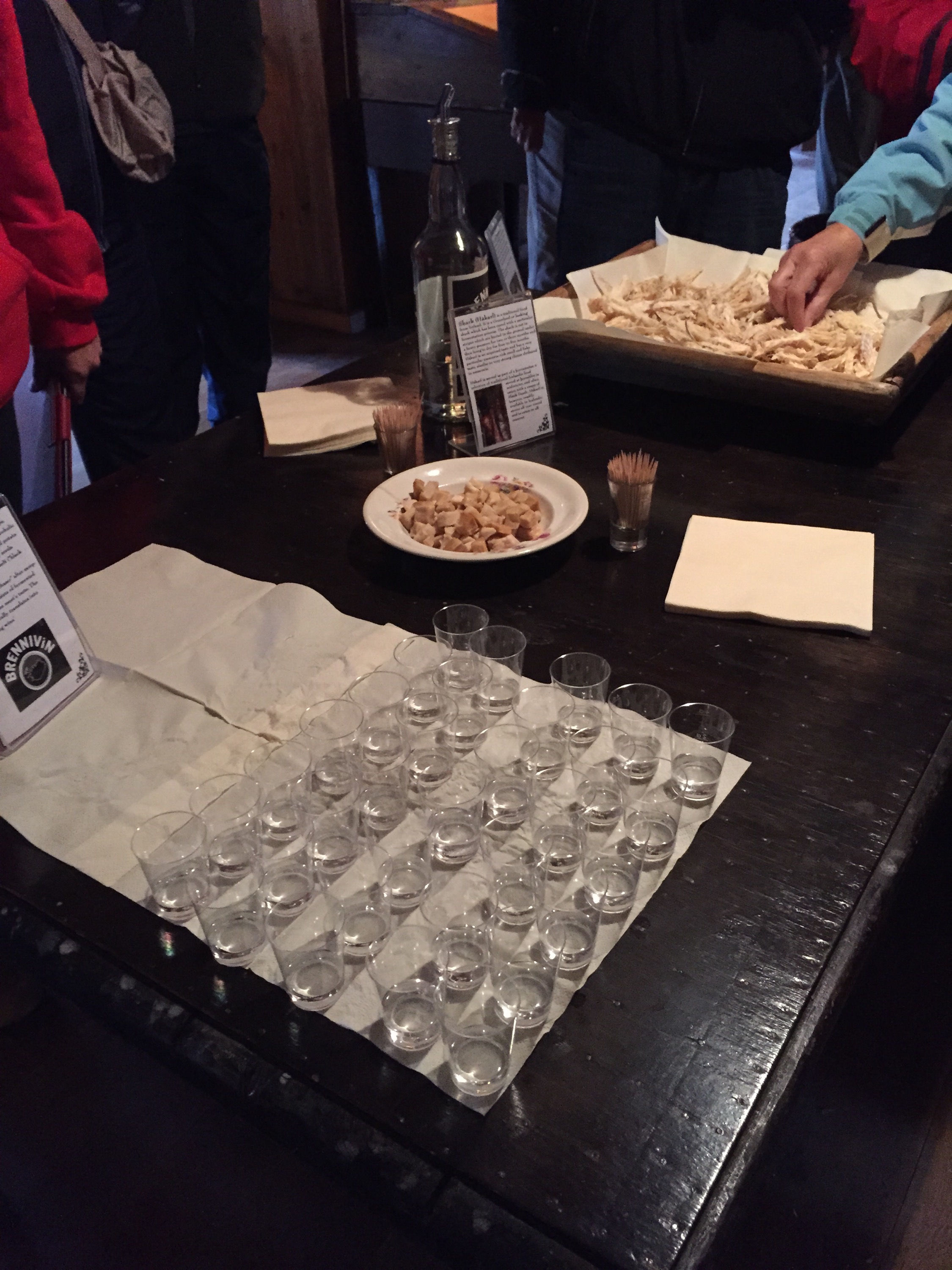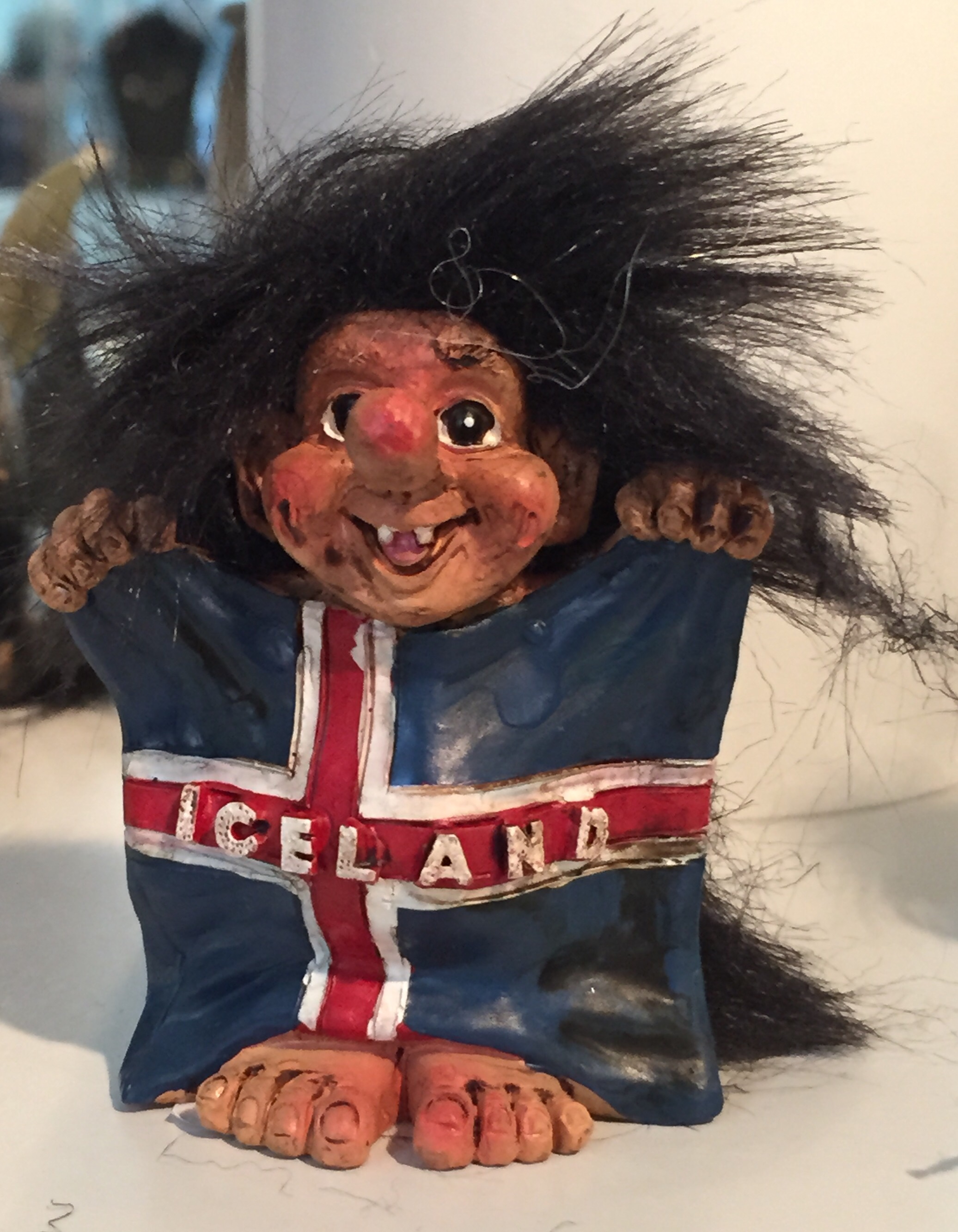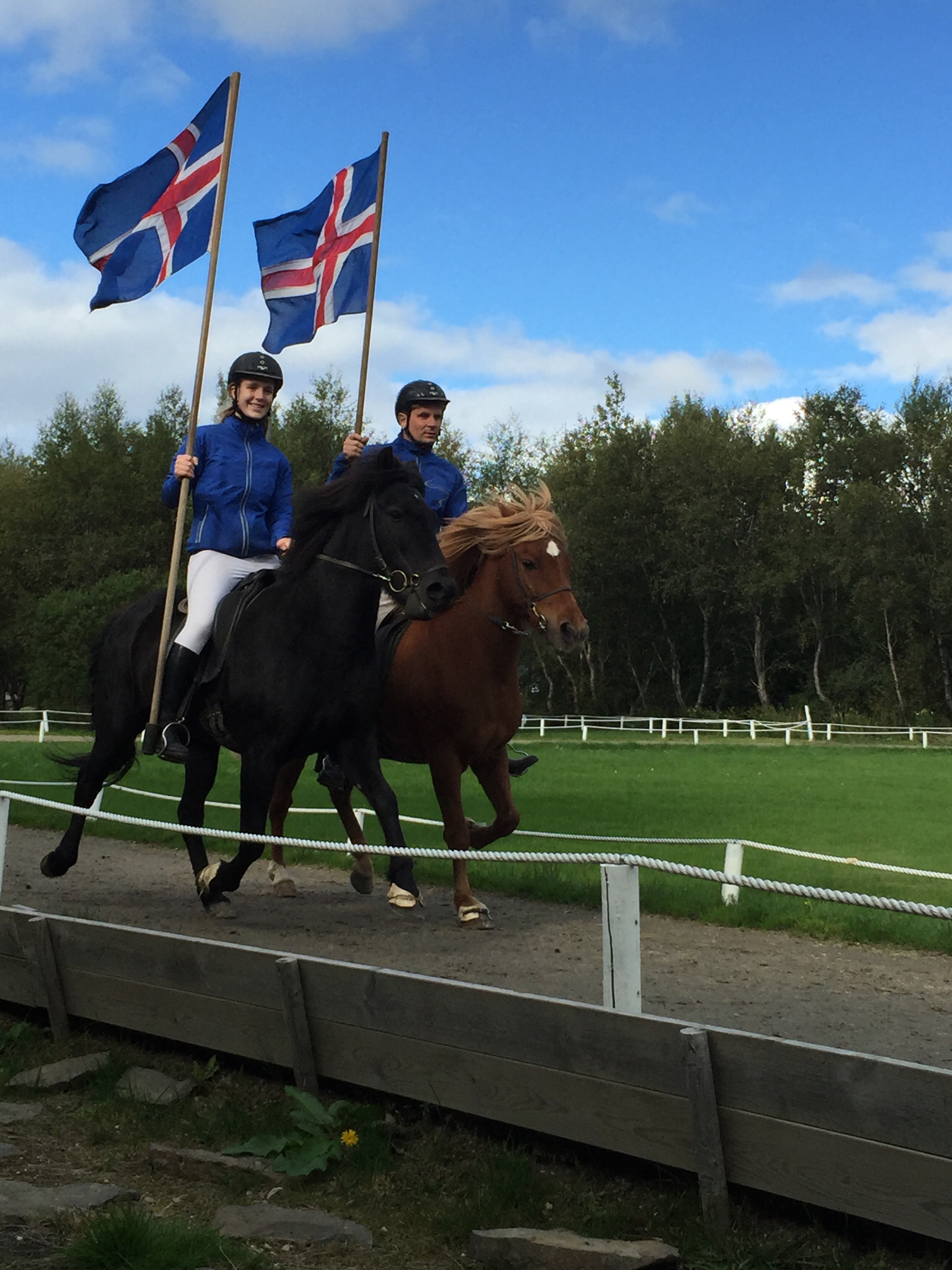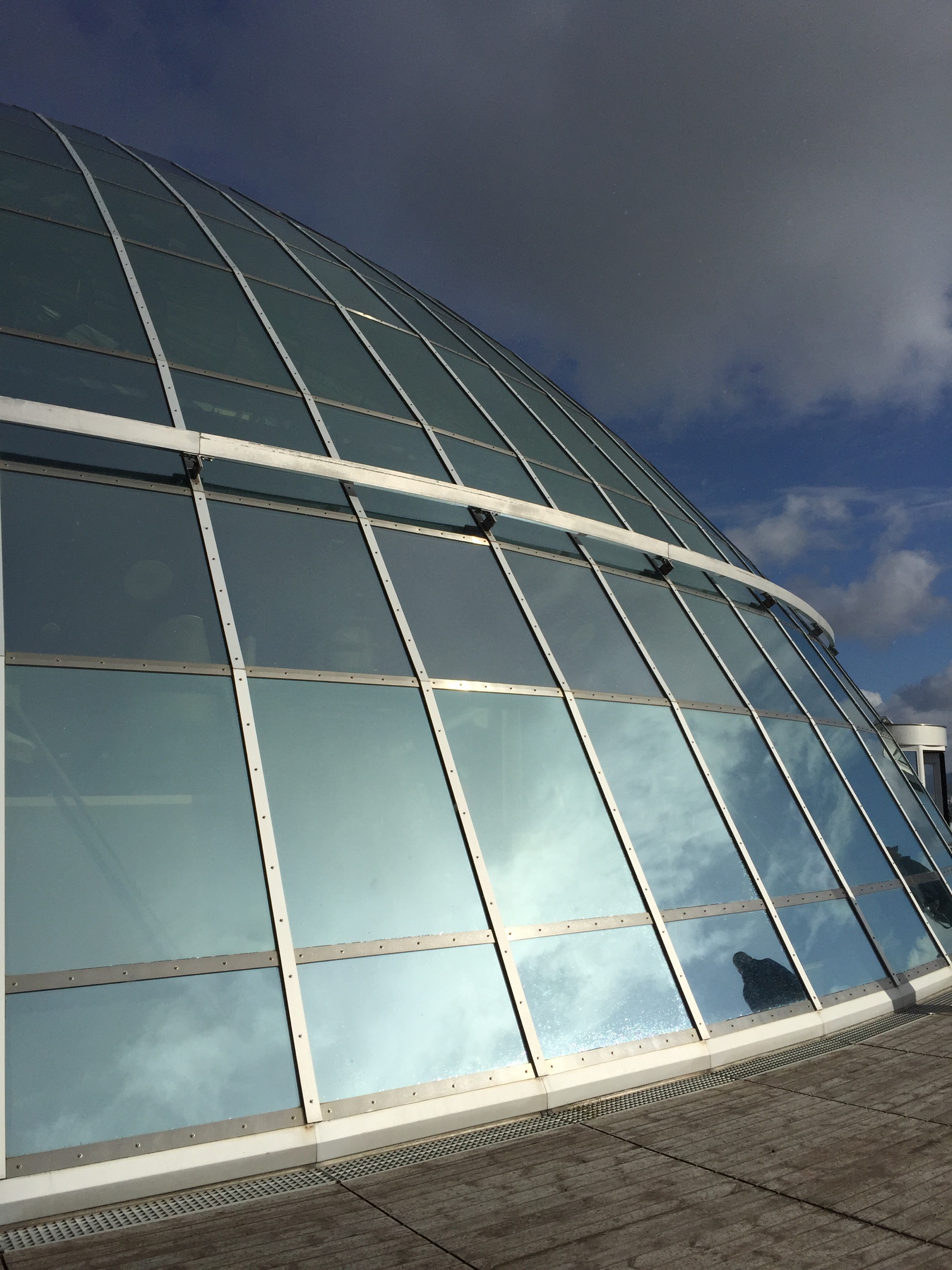Our trans-Atlantic crossing was far calmer than I expected, with the exception of a very large storm cell off Newfoundland, which our Captain wisely decided to avoid. This did of course mean we missed our scheduled port day in St Johns, and we had to forgo the pleasures of Iceberg Beer and the opportunity to hear some very distinctive Newfie accents, but on seeing the radar pictures that were posted around the ship which showed 24′ swells directly in our path… most of us were happy to acquiesce to the Captain’s good judgement on this one. Though it did occur to us that with the slow pace we were making to avoid the storm, we absolutely should have detoured the mere 300 miles north to Greenland! 😀
 Missing St Johns did of course mean we effectively ended up with six sea days in a row, which is the longest stretch of sea days I’ve done on a cruise ship. Yes, I know, six days at sea is probably very paltry for real sea going types – but when you were only expecting four sea days in a row, even the crew were going a little stir crazy with many of them having missed their, much coveted, shore leave in St Johns. Had I known we would have nearly a full week of being ‘ladies of leisure’ mid-trip, I think I would have brought an embroidery with me. 🙂 Anyway, we made it safely to Halifax, Nova Scotia on Friday night, with many enthusiastic grins all around, for both crew and passengers alike.
Missing St Johns did of course mean we effectively ended up with six sea days in a row, which is the longest stretch of sea days I’ve done on a cruise ship. Yes, I know, six days at sea is probably very paltry for real sea going types – but when you were only expecting four sea days in a row, even the crew were going a little stir crazy with many of them having missed their, much coveted, shore leave in St Johns. Had I known we would have nearly a full week of being ‘ladies of leisure’ mid-trip, I think I would have brought an embroidery with me. 🙂 Anyway, we made it safely to Halifax, Nova Scotia on Friday night, with many enthusiastic grins all around, for both crew and passengers alike.
Actually, come to think of it, I think the crew were far more excited than the passengers – it is not often they have the opportunity to hit the town after their shift as the ship spends most nights at sea, repositioning to our next port of call. Some of them went a little crazy, we found out later; hitting the bars and casinos of Halifax hard, and coming back to ship with empty pockets and sore heads. Like the junior waiter in our dining room, Mario, who was dobbed in by his workmate, Guillermo. Guillermo spilled the beans that Mario had stumbled in somewhat inebriated at 6am with his pockets several hundred dollars lighter, and barely three hours to sleep before his morning shift was due to start. The older and wiser Guillermo had advised him not to go, and apparently the suitably regretful Mario intends to listen to his older and wiser compadre from now on. 😛 Sure, Mario… you keep telling yourself that. These guys have been great at dinner each night – friendliest and most chatty waiters I have ever had the pleasure to meet. They have told us more about life below decks, and about how the galley, the staff hierarchy and the overall running of the ship than any other cruise ship waiters I’ve ever met before. They’re both really good guys, and if any of you happen to find yourself on the Caribbean Princess… say ‘hello’ for us.
Anyway, I was writing about Halifax… now I don’t want to lump south-eastern Canada in with the American north-east (though I am about to…), but I had a rough idea what to expect here – similar architecture, similar timeframe English/French/American history, similar (amazing!) lobstery-goodness cuisine, with a bit of Titanic history thrown in. And of course we found all of that, but also so much more. Seeing we were unexpectedly arriving the night before our original schedule, the ship had made arrangements for some cheap and cheerful tours to get people off the ship and help get us all orientated. So we chose to do a Haunted Halifax Ghost Walking Tour… Woooooo! Ghosts. 🙂 Naturally we weren’t expecting any actual ghosts, but rather a historical and cultural walking tour of the city with some weird and wonderful stories thrown in for good measure, which is exactly what we got.
To set the tone, our guides were dressed in black, with lace gloves, hats, kilts, spooky lanterns and basically all gothed up… picture if you will, a sweet little bespectacled granny who looked like she’d be more at home serving tea and biscuits, wearing a black dress, a black hat with veil covered in plastic spiders, complete with cobwebs, walking with a cane… and wearing her Tena hiking sandals and handing out glow-sticks to her PAX, and you have Colleen our guide for the evening. Halifax is known to be a very creepy place indeed there are reports of people being touched, doors opening and closing on their own, lights blinking on and off, feelings of being watched, of not being wanted, of being touched, of light anomalies, disembodied voices, apparitional footsteps, objects moving and disappearing, mysterious mists and all sorts of paranormal activity… so we were shuffled onto a bright pink, old fashioned double decker HOHO bus, that was only in need of a shrunken head with a thick Jamaican accent, to pass as the Night Bus from Harry Potter, and thereafter driven up to the top of town.
 We started up at the Halifax Citadel (aka Fort George), which is the highest strategic point in Halifax and boasts a beautiful pentagonal fort built starting in 1749s and finished in the mid 1800s by a bunch of British military types with big hats, led by one Lieutenant General Edward Cornwallis. There are a couple of ghost stories associated with the old Citadel. The first of which relates the tale of a poor piper who went missing during the construction – the Citadel was built in several stages. The piper was supposedly on duty when a section of the Citadel wall collapsed on him, but it was not until some weeks later when they went to repair the section of wall, that his cold dead body was found… and now for many years people have claimed they can still hear him roaming the ramparts and playing his pipes, haunting the walls where he was killed.
We started up at the Halifax Citadel (aka Fort George), which is the highest strategic point in Halifax and boasts a beautiful pentagonal fort built starting in 1749s and finished in the mid 1800s by a bunch of British military types with big hats, led by one Lieutenant General Edward Cornwallis. There are a couple of ghost stories associated with the old Citadel. The first of which relates the tale of a poor piper who went missing during the construction – the Citadel was built in several stages. The piper was supposedly on duty when a section of the Citadel wall collapsed on him, but it was not until some weeks later when they went to repair the section of wall, that his cold dead body was found… and now for many years people have claimed they can still hear him roaming the ramparts and playing his pipes, haunting the walls where he was killed.
The second story here, tells of a soldier whose daughter would happily run up to the citadel each day to bring her Daddy his lunch. One day however, she fell into one of the dozen or so, long drop wells that serviced the fort which were normally covered, but on this occasion was not. As the local legend has it, the poor girl drowned, crying for her father as they desperately tried to get her out… apparently people have reported hearing her, crying for her Daddy as her ghost haunts the citadel, even though the wells have long since been filled in.
After this we walked down to the get a view of the Citadel’s four faced clock tour built in 1803. The clock tower was built by Prince Edward, Duke of Kent and eventual father to Queen Victoria, who apparently had a strong dislike unpunctuality… so he commissioned the clock tower to show four faces such that all soldiers, in every direction, would be able to see the time and never be late. He apparently also had a superstitious bent and a fear of the devil, that for reasons not explained by our guide Colleen, led him to dislike square rooms – so there were plenty of round and octagonal rooms in his buildings. Perhaps he thought the dust bunnies in the corners were really the detritus of the devil, who knows? The clock tower too, is believed to be haunted, I can’t remember the details of who or why… but someone is allegedly haunting the clocktower and the presence of the apparition is so strongly felt, that many workmen who were bought in to work on the clocktower to restore it barely 50 years ago were so afeared that they down tools and walked off the job! Further, there is apparently a roster take it in turns to wind the clocks now, and no one ever goes in by themselves.
 A little closer towards town, we found the famous Five Fisherman’s Restaurant, a gorgeous old building from the 1800s that, as the name implies, is now a well known restaurant, but was once the largest funeral home in the city. The mortuary has the ignominious distinction of having handled the many bodies after the Titanic disaster, as well as the victims of the Halifax explosion (more on that tomorrow). Even in death, the victims of the Titanic disaster were treated according to class – the first class were taken to the Funeral Home in quick makeshift coffins, the second class were taken to a makeshift morgue in canvas body bags, and the third class and crew were taken to the town square on open stretchers. The owners of the funeral home might have come to perhaps to regret this, as it is said, that John Jacob Astor – of Waldorf Astoria fame, and considered the wealthiest man in the world at that time – was bought to the funeral home along with the rest of the first class passengers. Apparently J.J. Astor’s body was eventually taken to New York to be buried in the family plot (where ever that may be), but people in the funeral home have been reporting sightings of him ever since… walking in his top hat through walls, knocking things over, chucking cutlery, turning sinks on and off, swinging doors open, turning on stoves, scaring the staff, tapping people on the shoulder and generally making a nuisance of himself. Glasses have even been known to apparently fly off shelves on a regular basis. As J.J. Astor was notorious in life for treating servants poorly, so he apparently continues to do so in the afterlife. In the past, these phenomena were primarily reported by staff working after hours, but now apparently have been experienced by restaurant patrons too, who also report unusually cold patches in the restaurant as well. Woooooo! 😛
A little closer towards town, we found the famous Five Fisherman’s Restaurant, a gorgeous old building from the 1800s that, as the name implies, is now a well known restaurant, but was once the largest funeral home in the city. The mortuary has the ignominious distinction of having handled the many bodies after the Titanic disaster, as well as the victims of the Halifax explosion (more on that tomorrow). Even in death, the victims of the Titanic disaster were treated according to class – the first class were taken to the Funeral Home in quick makeshift coffins, the second class were taken to a makeshift morgue in canvas body bags, and the third class and crew were taken to the town square on open stretchers. The owners of the funeral home might have come to perhaps to regret this, as it is said, that John Jacob Astor – of Waldorf Astoria fame, and considered the wealthiest man in the world at that time – was bought to the funeral home along with the rest of the first class passengers. Apparently J.J. Astor’s body was eventually taken to New York to be buried in the family plot (where ever that may be), but people in the funeral home have been reporting sightings of him ever since… walking in his top hat through walls, knocking things over, chucking cutlery, turning sinks on and off, swinging doors open, turning on stoves, scaring the staff, tapping people on the shoulder and generally making a nuisance of himself. Glasses have even been known to apparently fly off shelves on a regular basis. As J.J. Astor was notorious in life for treating servants poorly, so he apparently continues to do so in the afterlife. In the past, these phenomena were primarily reported by staff working after hours, but now apparently have been experienced by restaurant patrons too, who also report unusually cold patches in the restaurant as well. Woooooo! 😛
 Further on down the hill from the Citadel, we came to a beautiful town square between the Anglican Church of St Paul’s (the oldest and original church in Halifax that was originally multi-denominational, but became Anglican when Halifax grew larger and built more places of worship), and the impressive City Hall building. Many years ago, this square was a drill parade, and a story has it that one particularly egomaniacal Admiral (a French guy, perhaps? I missed his name) had summarily executed a random Lieutenant to demonstrate his particular brand of cruel leadership was not to be challenged… according to the story, he literally stood everyone at parade, said ‘Hang that one.’, pointing to a random officer, and his no doubt confused soldiers, duly did. The story claims that this particular Lieutenant was immediately hung and has ever since wandered the square disturbing passers by, asking ‘Why? Why?’… As you would. As my old friend Lt Col Dazzles used to say, “Shoot one, educate a thousand”. Not sure it’s good for morale, but in a macabre and decidedly Machiavellian, ‘if you can’t be loved; be feared’ kinda way, no doubt it’s very effective. :/
Further on down the hill from the Citadel, we came to a beautiful town square between the Anglican Church of St Paul’s (the oldest and original church in Halifax that was originally multi-denominational, but became Anglican when Halifax grew larger and built more places of worship), and the impressive City Hall building. Many years ago, this square was a drill parade, and a story has it that one particularly egomaniacal Admiral (a French guy, perhaps? I missed his name) had summarily executed a random Lieutenant to demonstrate his particular brand of cruel leadership was not to be challenged… according to the story, he literally stood everyone at parade, said ‘Hang that one.’, pointing to a random officer, and his no doubt confused soldiers, duly did. The story claims that this particular Lieutenant was immediately hung and has ever since wandered the square disturbing passers by, asking ‘Why? Why?’… As you would. As my old friend Lt Col Dazzles used to say, “Shoot one, educate a thousand”. Not sure it’s good for morale, but in a macabre and decidedly Machiavellian, ‘if you can’t be loved; be feared’ kinda way, no doubt it’s very effective. :/

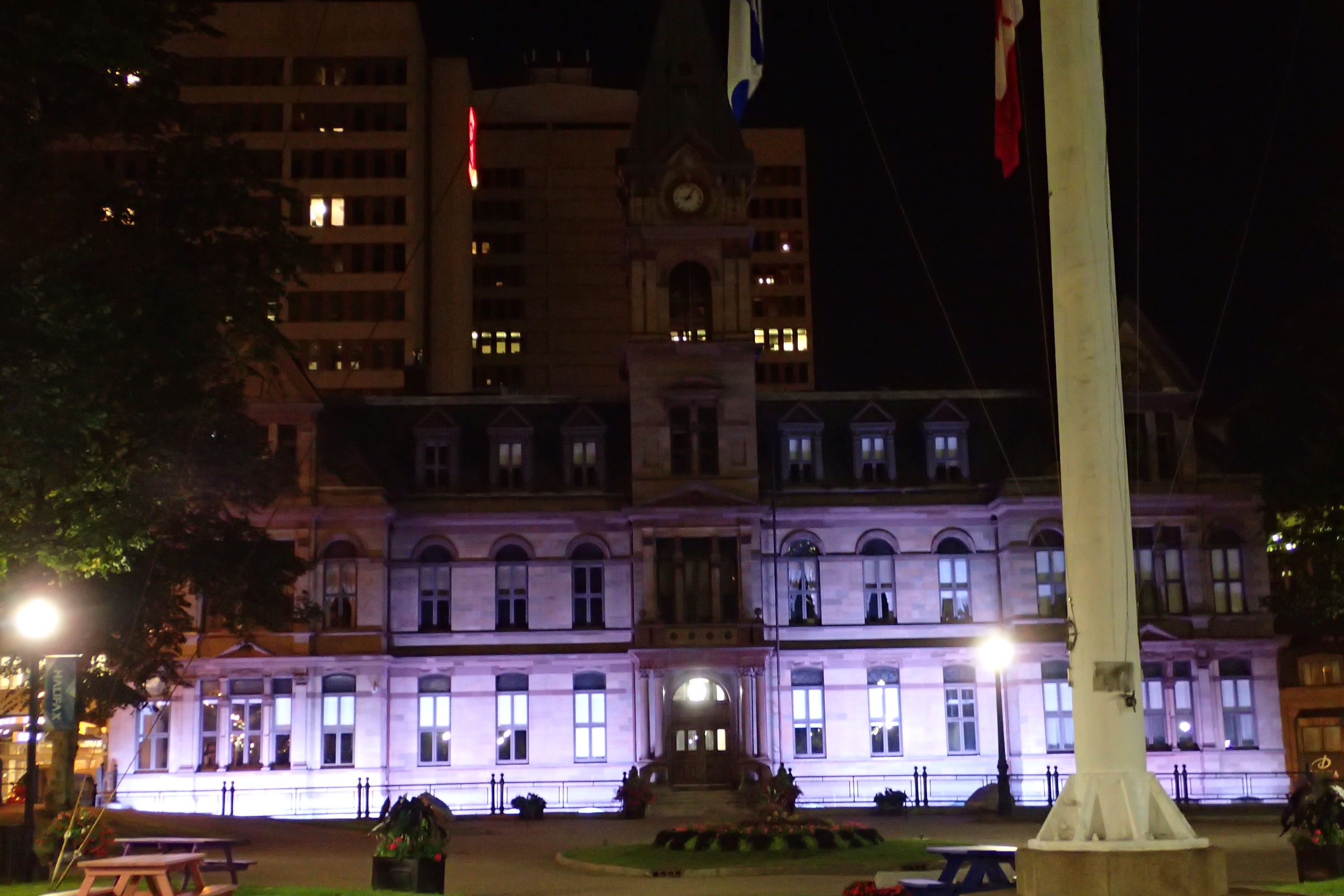 Across the square stands St Paul’s church, which has a silhouette of either a reverend or an organist (accounts vary) etched into one of the windows after the blast from the Halifax explosion of 1917, had literally vaporised the poor reverend/organist leaving the outline of his form forever stamped into the window – it probably doesn’t hurt that they outlined the silhouette in lead to protect the anomaly, and have double glazed the window so it doesn’t deteriorate, but given we were wandering through at night we couldn’t see the outline at all, as it was not lit up. Not really a ghost story per se, but an interesting little historical weirdness, nonetheless.
Across the square stands St Paul’s church, which has a silhouette of either a reverend or an organist (accounts vary) etched into one of the windows after the blast from the Halifax explosion of 1917, had literally vaporised the poor reverend/organist leaving the outline of his form forever stamped into the window – it probably doesn’t hurt that they outlined the silhouette in lead to protect the anomaly, and have double glazed the window so it doesn’t deteriorate, but given we were wandering through at night we couldn’t see the outline at all, as it was not lit up. Not really a ghost story per se, but an interesting little historical weirdness, nonetheless.
 Further up the street, we came to a lively row of restaurants that were once all boarding houses. Legend has it that there was once a young man who established his fiancé in the boarding house leading up to their wedding. It seems to have been quite common practice for the young men of Halifax to send to England and Ireland for brides when they were in need of them. Anyway, when she came to Halifax, she needed somewhere to live before they were to be married and he found her a place in this boarding house. However, things went pear-shaped for this young couple, when the young man’s friends decided to tell him that his fiancé was stepping out on him – as a joke. He came to the boarding house to check on her, and found her leaning out the top story window of her room, waving farewell to a young man in the street and calling out her affections to him, and the man in the street waving and returning her addresses in turn. The young man saw ‘the red mist’ and ran upstairs, accusing his beloved of being unfaithful and he refused to believe her protestations that the young man in the street was her cousin, Billy. He picked up a knife and stabbed her to death, and in his fury, hacked off her finger to retrieve his engagement ring, afterwards throwing her finger out the window into the street. Ever since, locals claim to have seen her… wandering the street in a wedding dress… searching for her missing finger.
Further up the street, we came to a lively row of restaurants that were once all boarding houses. Legend has it that there was once a young man who established his fiancé in the boarding house leading up to their wedding. It seems to have been quite common practice for the young men of Halifax to send to England and Ireland for brides when they were in need of them. Anyway, when she came to Halifax, she needed somewhere to live before they were to be married and he found her a place in this boarding house. However, things went pear-shaped for this young couple, when the young man’s friends decided to tell him that his fiancé was stepping out on him – as a joke. He came to the boarding house to check on her, and found her leaning out the top story window of her room, waving farewell to a young man in the street and calling out her affections to him, and the man in the street waving and returning her addresses in turn. The young man saw ‘the red mist’ and ran upstairs, accusing his beloved of being unfaithful and he refused to believe her protestations that the young man in the street was her cousin, Billy. He picked up a knife and stabbed her to death, and in his fury, hacked off her finger to retrieve his engagement ring, afterwards throwing her finger out the window into the street. Ever since, locals claim to have seen her… wandering the street in a wedding dress… searching for her missing finger.
 I have relayed only a few of the stories here – the ones that I could actually remember, because quite frankly Colleen, was talking a hundred miles an hour at every corner we stopped – but it seemed to me that this was perhaps the third of the jilted jessies or wronged fiancés to be roaming the town in their tattered wedding dresses? I could be wrong, but there’s a tragic theme here for the soon-to-be-wed-but-never-quite-made-it-to-the-alter, young women of Halifax. Even Charles Dickens resided in Halifax at one point and was connected to a house alleged to have been haunted by a woman dressed in a bedraggled grey wedding dress for some time, a la Miss Haversham perhaps? As a general rule, I think it is probably best, that one should avoid getting affianced or plan on being married in Halifax, just to be on the safe side…
I have relayed only a few of the stories here – the ones that I could actually remember, because quite frankly Colleen, was talking a hundred miles an hour at every corner we stopped – but it seemed to me that this was perhaps the third of the jilted jessies or wronged fiancés to be roaming the town in their tattered wedding dresses? I could be wrong, but there’s a tragic theme here for the soon-to-be-wed-but-never-quite-made-it-to-the-alter, young women of Halifax. Even Charles Dickens resided in Halifax at one point and was connected to a house alleged to have been haunted by a woman dressed in a bedraggled grey wedding dress for some time, a la Miss Haversham perhaps? As a general rule, I think it is probably best, that one should avoid getting affianced or plan on being married in Halifax, just to be on the safe side…
 Further down towards the waterfront, we were told the story of a French Admiral – D’Anbridge I think was his name – who was tragically killed in an engagement where he was extraordinarily outnumbered at sea (apologies the salient details escape me as it was now quite late and we had walked about 8-9kms). The Admiral was buried in Halifax, but in order to assuage the grief of his family back home, apparently in a particularly grisly affair, his heart was cut out of his chest and sent back to France. The poor, and now-heartless Admiral is reported to be seen haunting the waterfront, and his apparition is identified by the sound of the wind, as it whistles through the hole in his body where his heart used to be.
Further down towards the waterfront, we were told the story of a French Admiral – D’Anbridge I think was his name – who was tragically killed in an engagement where he was extraordinarily outnumbered at sea (apologies the salient details escape me as it was now quite late and we had walked about 8-9kms). The Admiral was buried in Halifax, but in order to assuage the grief of his family back home, apparently in a particularly grisly affair, his heart was cut out of his chest and sent back to France. The poor, and now-heartless Admiral is reported to be seen haunting the waterfront, and his apparition is identified by the sound of the wind, as it whistles through the hole in his body where his heart used to be.
We heard lots of colourful stories, most of which were probably based in fact, but had been lent a fanciful and superstitious bit of local colour over the years. The haunted walking tour of Halifax was really good fun and not a little bit spooky, so those who came expecting to see actual ghosts were (in a huge surprise to all) somewhat disappointed.
After that, it was back to the ship and we still had a whole day to explore Halifax to come. Shame we didn’t have an overnight stay in Reykjavik, I would have loved to have done the Golden Circle scenery one day and all the museums the next. Never mind, but with so many places to go back and visit again… the list is getting longer.

























